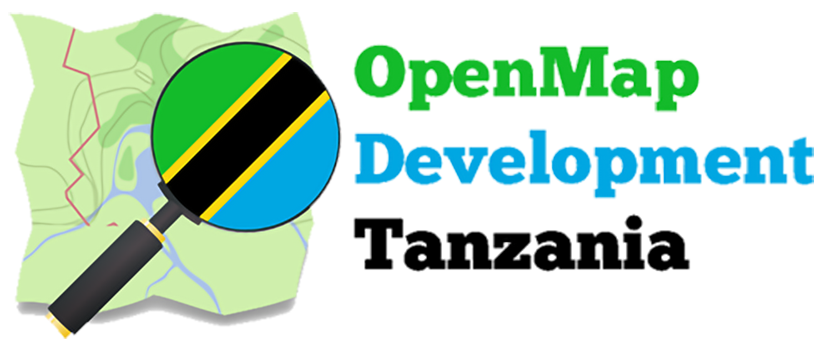In Africa, OSM and open mapping groups have grown tremendously over the last few years. This has occurred as a result of the expanding need for geospatial data and an understanding of how mapping may serve as a base map for various humanitarian help, disaster management, disease monitoring, etc initiatives.
Particularly in Tanzania, the Ramani Huria project, a community mapping initiative for urban resilience in Dar es Salaam supported by the World Bank and carried out by the Humanitarian OpenStreetMap Team (HOT), played a significant role in the development of open mapping communities from 2015 onward. The initiative resulted in the founding of OpenMap Development Tanzania (OMDTZ) in 2017, whose co-founders played a significant role in the execution of Ramani Huria. OMDTZ, a local NGO that promotes the use of open data and open source geospatial tools, has been active in several OSM-related projects in Tanzania.
In 2021, OpenMap Development Tanzania (OMDTZ) designed a Community Impact Microgrant program with support from the Humanitarian OpenStreetMap Team to help local communities in Tanzania leverage OpenStreetMap (OSM) data, tools, and knowledge to help solve local challenges. The microgrant was created in the local context to increase the participation of communities that are frequently deemed “unqualified” for international funds due to language barriers and a lack of exposure.
HOT supported the Community Impact Microgrants with funding from the Audacious Project to map an area home to one billion people, adding places at high risk of natural disaster, or experiencing poverty. Seven (7) communities in Tanzania have received funds, ranging from $2500 to $5000 along with additional assistance in the form of mentoring, coaching, and training throughout the project’s implementation.
This program was designed to provide flexibility in terms of expectations from local applicants. The funding was aiming to support applications that bring a sustainable solution to the challenges faced by the community in question. We selected diverse OSM communities whose projects proved worthy and aligned with the program themes, i.e., data creation projects, capacity building, outreach and awareness raising, technology and innovation, etc. The main goal of the program was to support OSM communities across Tanzania with the resources they need to grow their activities and impact, specifically;
● To expand Tanzania’s local community involvement in open mapping and have the necessary resources they need to grow and contribute to the solutions to the granular challenges that affect their daily livelihood. OMDTZ expects that this will in turn lead to developments in social-economic activities and humanitarian responses that rely on the available datasets.
● To capacitate local groups/organizations with funds that will help the growth of the country’s OSM communities, such as local youth mappers’ chapters, university students’ associations, community-based organizations (CBOs), non-governmental organizations (NGOs), etc.
● To enable Tanzania’s OSM communities to have a chance to be part of the global community change by getting grants that they could not apply for internationally.
As stated in the grant recipient section, the grantees intended to create various datasets based on their project goals. The grantees’ preferred data collection tools are ODK, Organic Maps, and Maps.me. With the help of OMDTZ, the communities were able to convert data collected with ODK into OSM tagging format and upload it to OSM. The following are the impacts and outcomes of the microgrant:
● Using the Tasking manager in contributing to OSM datasets such as building footprints, roads, and waterways. Throughout this microgrant, over 44,000 buildings, 500 kilometers of road, and over 50,500 OSM edits have been added to OSM.
● Communities have greatly improved data management and analysis by transitioning from traditional data collection methods to digital tools such as ODK and Kobocollect. Agri Thamani Foundation and LAVISEHA, for example, are new to OSM and open mapping technologies; however, they now collect data for their nutrition and gender-based violence interventions using a variety of tools, including Kobotoolbox OpenDataKit, OSM, and Tasking Manager.
● Connecting Tanzanian OSM communities and encouraging collaboration on various tasks and opportunities. The grant provided an opportunity for Tanzanian OSM communities to collaborate; one example is Hope for Girls and Women in Tanzania, which provided training to LAVISEHA on how communities can use ODK to report cases of GBV for rescue.
● Increasing awareness of OSM and other communities by participating in and presenting at conferences and events such as the State of the Map Africa, community webinars, and so on.
● Supporting the expansion and long-term viability of youth mappers chapters— Three of the grant recipients are youth mappers who are using the funds to help establish the chapter and gain project exposure while also applying for additional funding to expand their projects. SMCOSE youth mappers, for example, have received additional
funding to expand the project launched through this microgrant.
Despite the difficulties, the microgrant program has been a huge success in Tanzania because it has exposed more communities to open mapping and OSM, which is extremely important for the growth and development of OSM communities and eventually encourages local organizations to use OSM data to address various community issues. Going forward, OMDTZ recommends the following;
● More training and funding for OSM communities are required in order to sustain Open Mapping groups. This microgrant has served as an example of the value of having a local organization manage grants locally rather than having foreign communities do it. Working with locally-based organizations heavily relies on having an awareness of locations, community traits, language, etc.
● Grant distribution in stages: Distributing funds to a small number of communities at a time will provide them access to more focused help and have a greater impact.
● A structured support model will benefit and increase the sustainability of communities that have demonstrated proactiveness in their projects and a desire to move their

